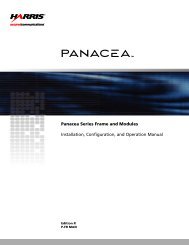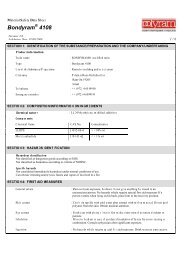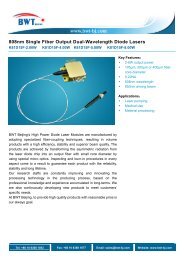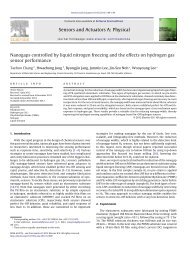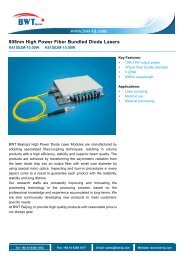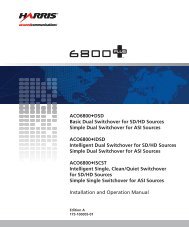SEL-FR3 Selenio Frame Installation and Operation ... - Biznine.com
SEL-FR3 Selenio Frame Installation and Operation ... - Biznine.com
SEL-FR3 Selenio Frame Installation and Operation ... - Biznine.com
Create successful ePaper yourself
Turn your PDF publications into a flip-book with our unique Google optimized e-Paper software.
3 Turn off all laser sources before scanning a fiber with an optical test set.<br />
<strong>SEL</strong>-<strong>FR3</strong><br />
<strong>Installation</strong> <strong>and</strong> <strong>Operation</strong> Manual<br />
4 Keep all unauthorized personnel away from the immediate area of the optical fiber systems<br />
during installation <strong>and</strong> service.<br />
For guidance on the safe use of optical fiber <strong>com</strong>munication systems in the workplace,<br />
consult ANSI Z136.2, American National St<strong>and</strong>ard for Safe Use of Lasers in the U.S. or<br />
outside the U.S., IEC-60825, Part 2.<br />
Label The label shown in Figure 1-11 is applicable to Class 1 laser products.<br />
CLASS 1<br />
LASER PRODUCT<br />
Figure 1-11 Label for Class 1 Laser Products<br />
Inspecting <strong>and</strong> Cleaning Fiber Optic Connections<br />
When connecting fibers to a back module, ensure that you do not touch the end of the<br />
fiber, or allow it to be<strong>com</strong>e dirty. Small amounts of microscopic dust or other contaminants<br />
can seriously impair or disable a fiber optic network. If you touch the end of a fiber prior to<br />
connecting it to the back module, or otherwise allow it to be<strong>com</strong>e dirty, you must carefully<br />
inspect <strong>and</strong> clean the connection.<br />
Table 1-13 on page 17 lists some typical contaminants of a fiber optic connection. The<br />
inspection <strong>and</strong> cleaning procedure begins on page 17.<br />
Table 1-13 Typical Contaminants<br />
Contaminant Comments<br />
Dust particle, 1 micron Can block up to 1% of the light transmission,<br />
creating a loss of 0.05 dB<br />
Dust particle, 9<br />
microns<br />
Although microscopic, the particle can<br />
<strong>com</strong>pletely block the fiber core<br />
Human hair Typically 50 to 75 microns in diameter<br />
Oil Frequently caused by touching<br />
Film residues Can accumulate from vapors or smoke<br />
Powdery coatings Can be left behind after water or other solvents<br />
evaporate<br />
Copyright © 2011, Harris Corporation<br />
17



